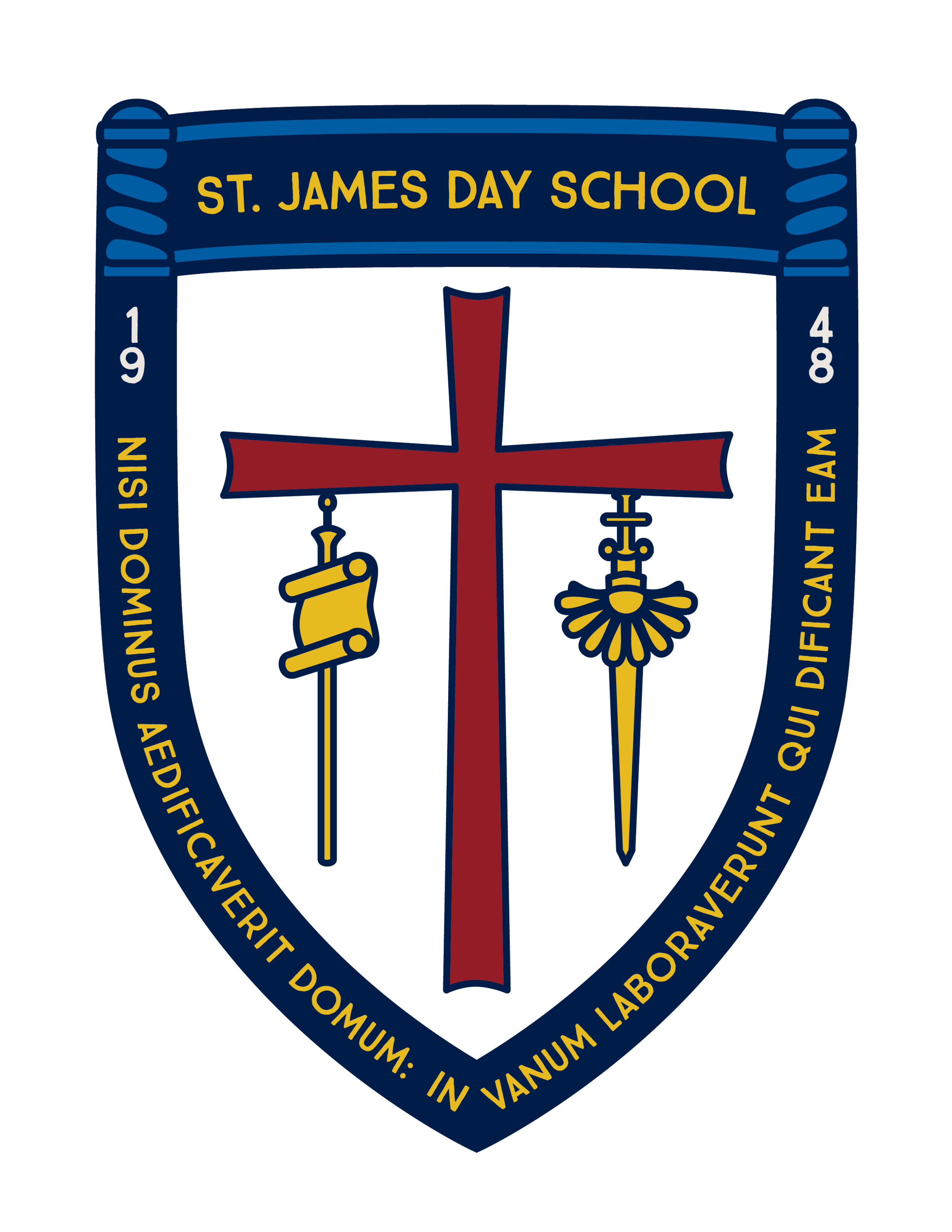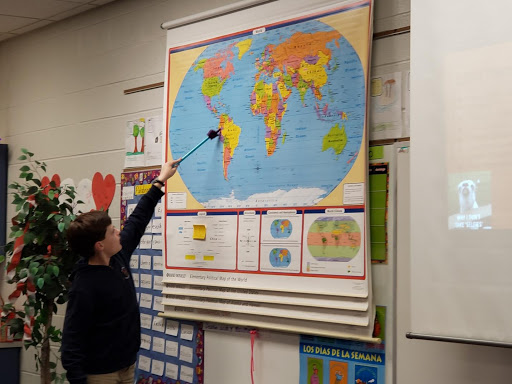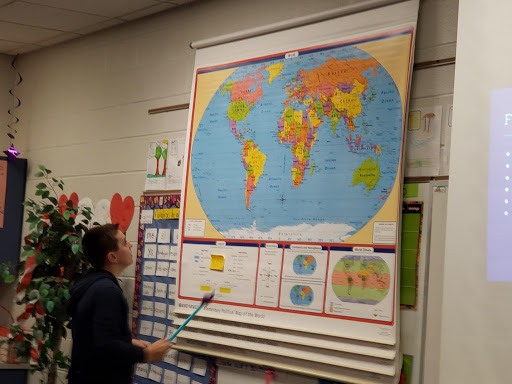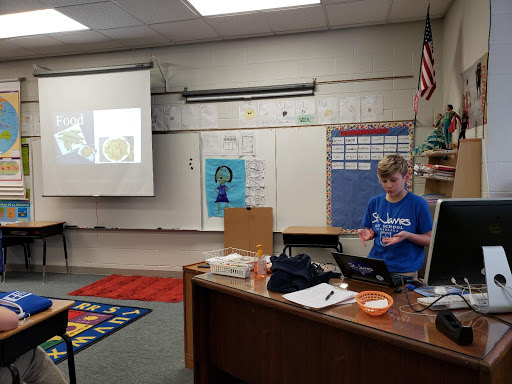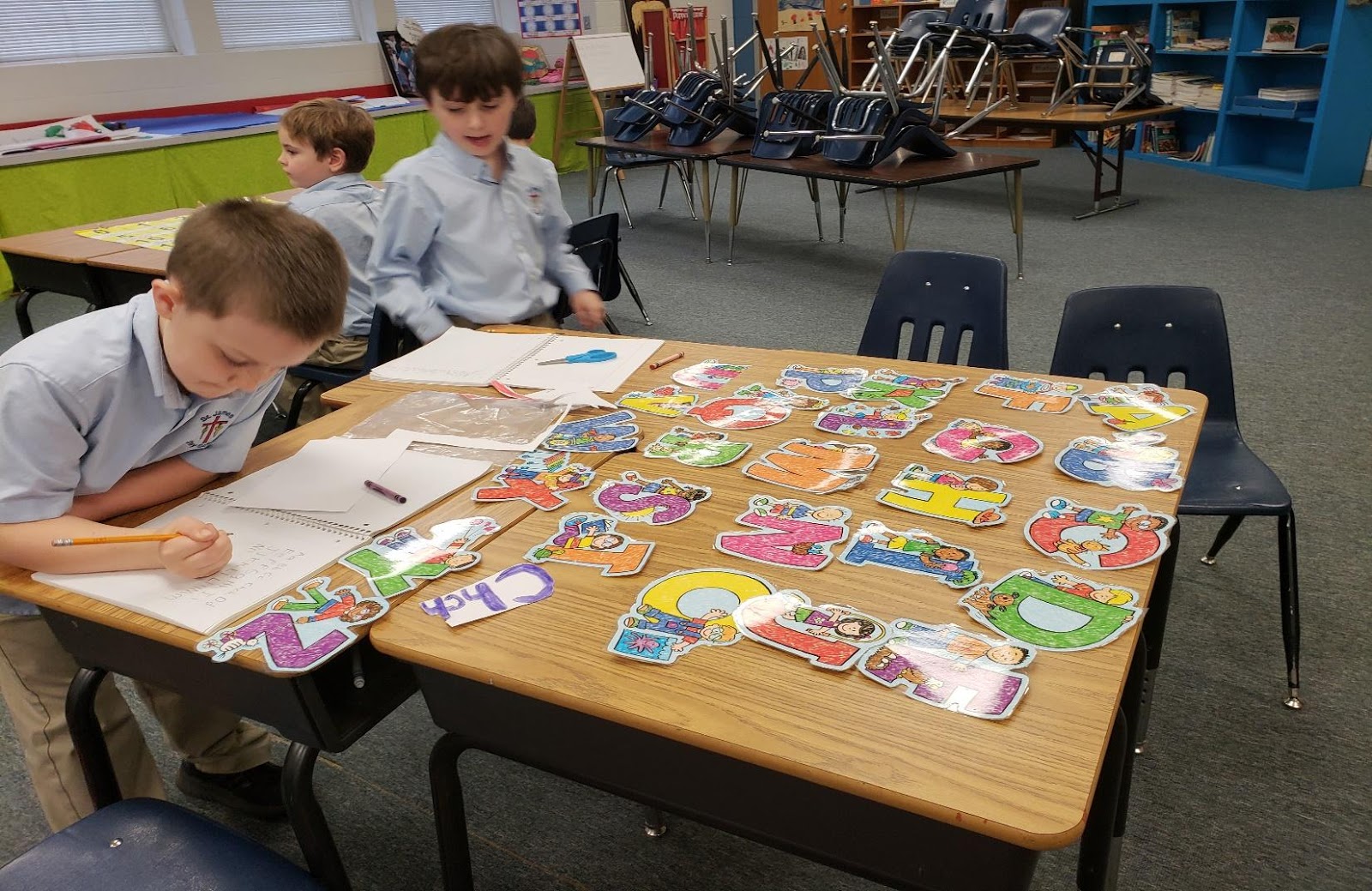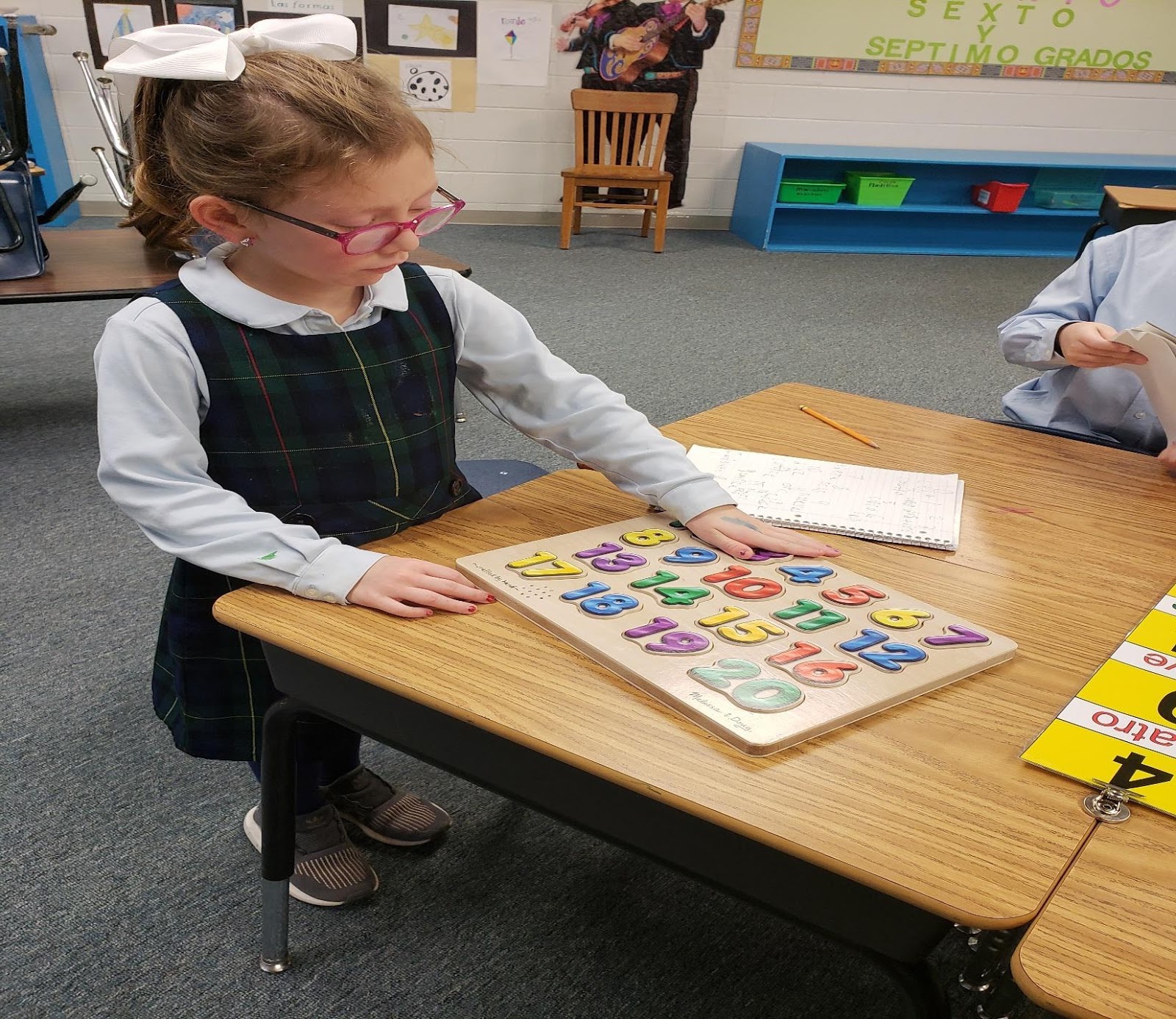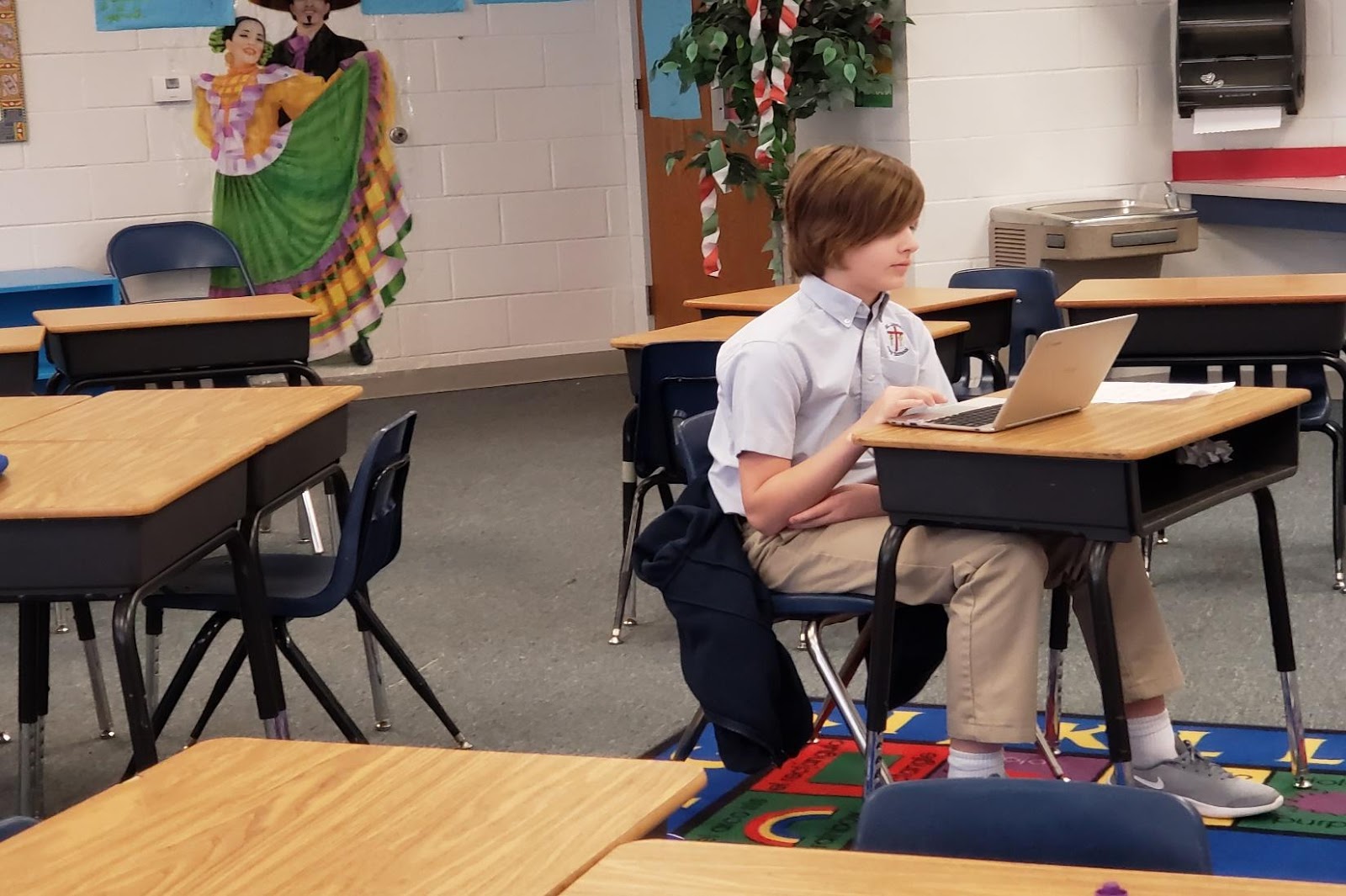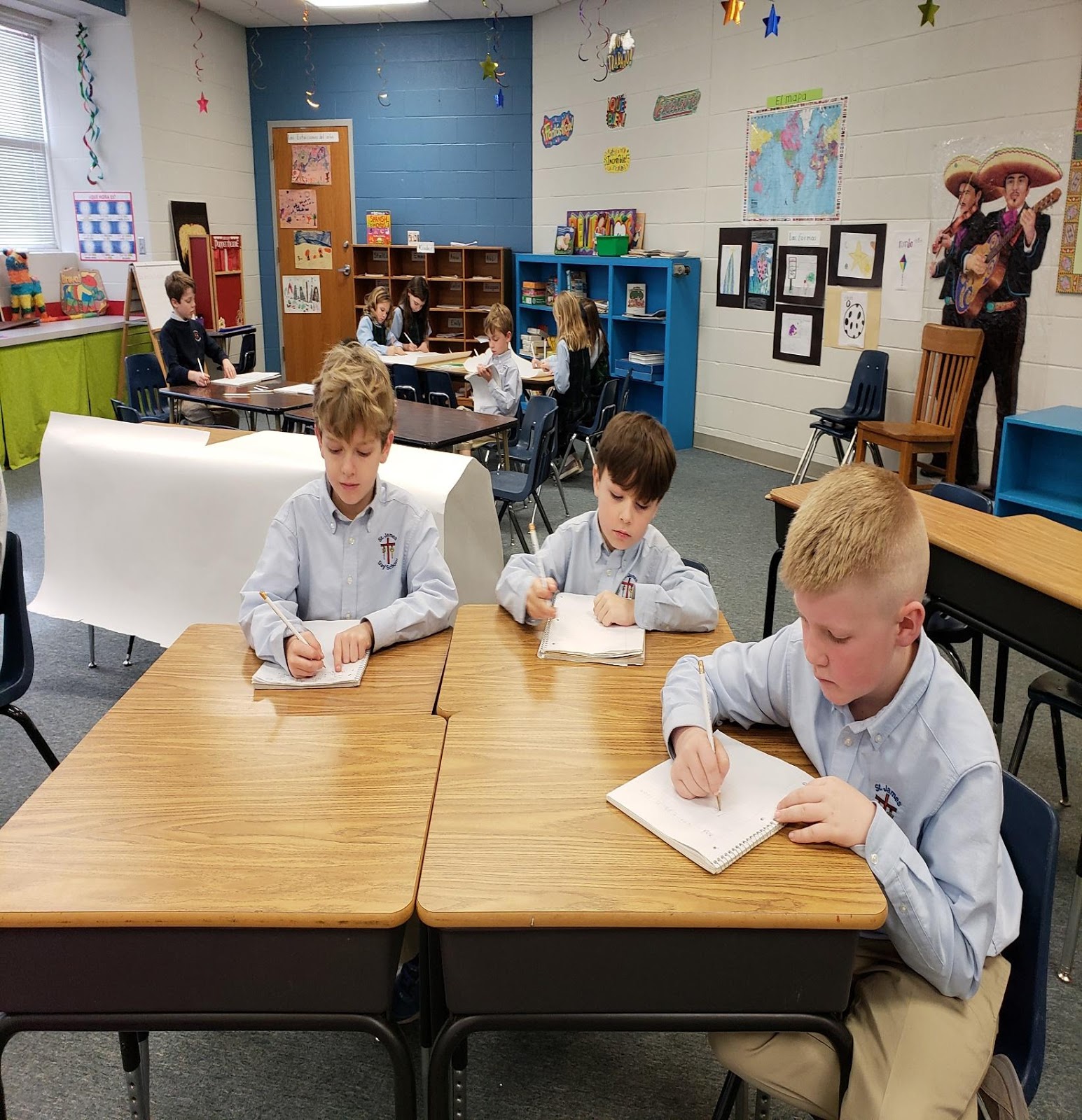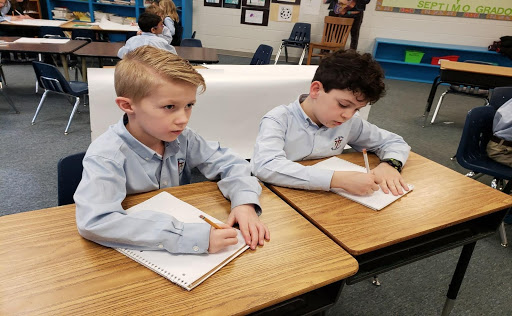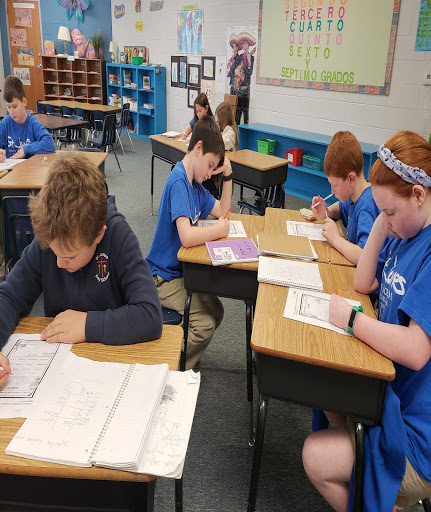End of the school year!
St. James Students continue to have many activities as the school year winds down. The kindergarten students compete with each other to be the first to identify in Spanish different colors. They learn the names and sounds of the Spanish alphabet. They are also learning how to spell Spanish words by sounding them out. Most impressively, students are able to write short sentences in Spanish in their notebooks. I am so proud of them and I can’t wait to the next school year to start so that they can learn even more.
The 1st through 7th grade students are having fun learning how to make piñatas, and then, of course, busting them open. Students learned about the historic significance of Cinco de Mayo and the importance of Mothers’ Day in Mexican culture. I also assigned the Spanish sight-words that they learned and were able to use in sentences. Students learned to read and write the numbers 1-100 in Spanish, and many of them were able to count up to 200 and above. We continued to work on verb agreement, nouns and pronouns, and regular and irregular verbs. I also excited for these students to return next year so that they can develop their Spanish even more. Meanwhile, I wish everyone a great summer!
